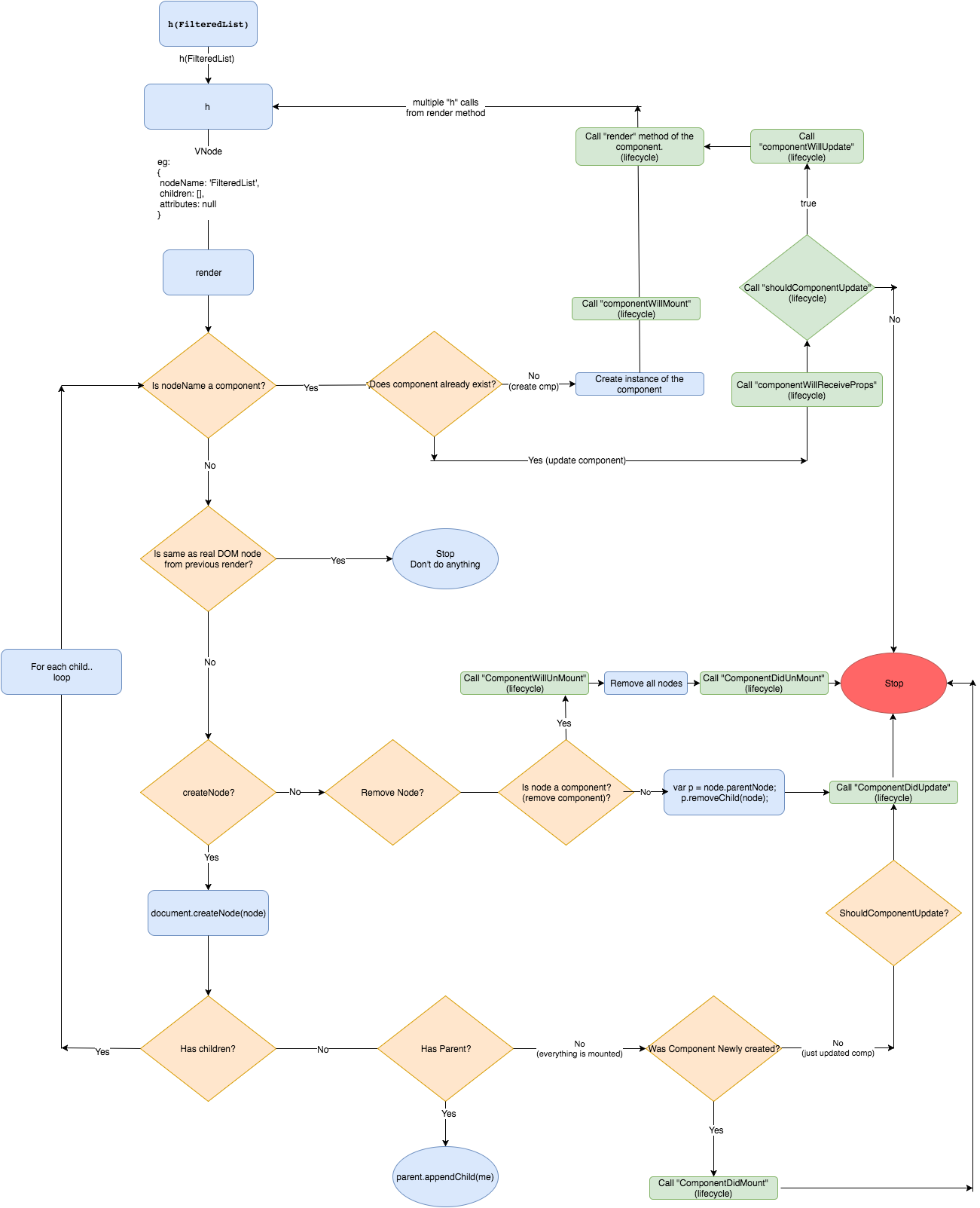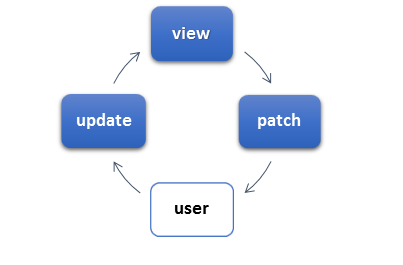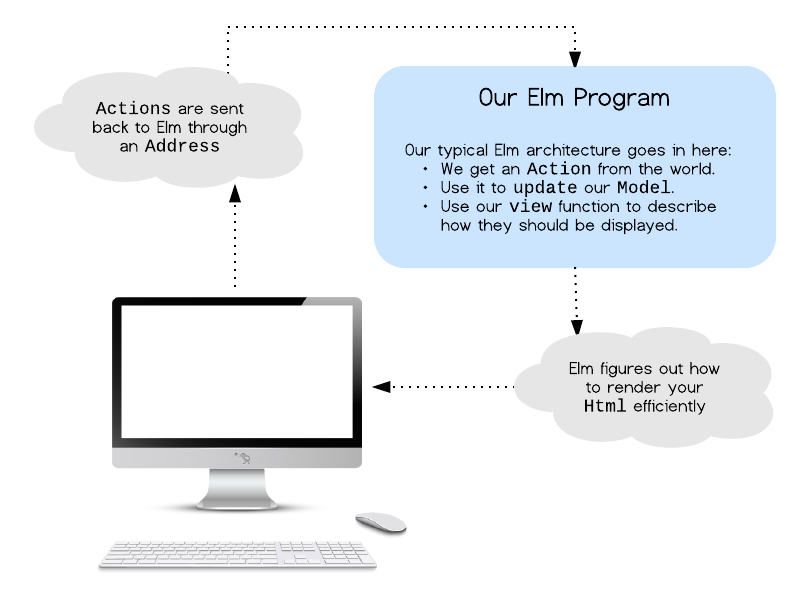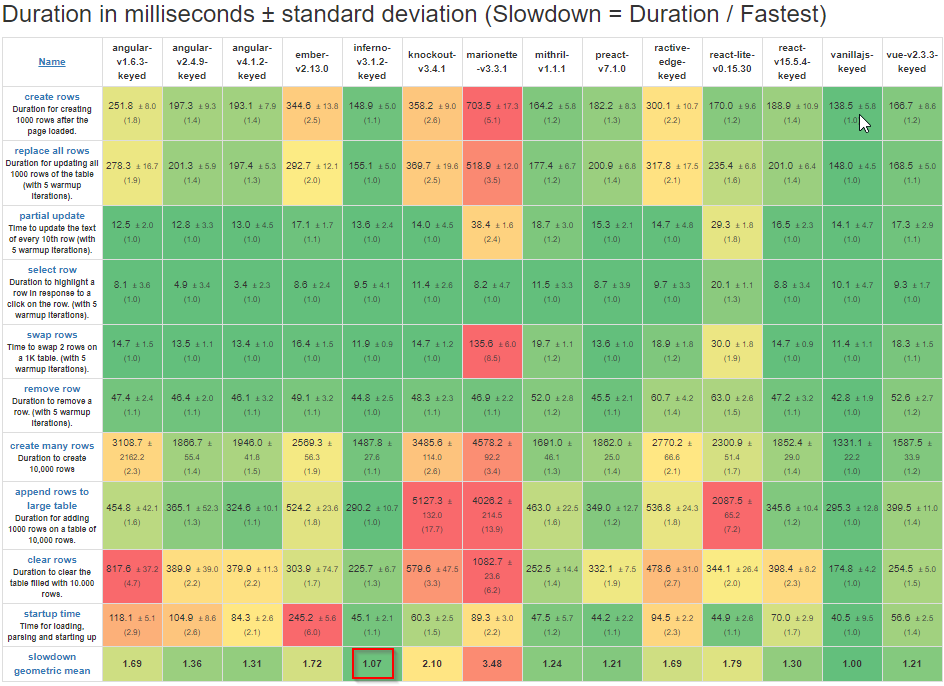Virtual DOM
20 Aug 2017 | virtualDom inferno preact snabbdomVirtual Dom (or vdom for short) is to Web UI what IMGUI is to C++ UI: a way to draw UI without keeping references to a complicated widgets hierarchy. This paradigms really helps decouple the UI from the model. And it especially makes it easy to update ANY part of the model and to refresh the ui in an efficient way without having complicated code to actually update the individual DOM elements.
How does that work
Basically you create a structure (using only plain javascript object) describing the DOM you would have built. Then you compare the previous “cache” result of the same view and only apply the differences to the actual DOM. This workflow is built on the assumptions that updating the DOM is slow (it is) while creating a structure of Plain javascript objects and comparing that structure is quick (it is usually).
This article explains all you need to know about vdom in much greater details. I especially like the block diagram explaining the whole vdom lifecycle:

The article itself contains a lot of code snippets. Lots of them coming directly from Preact, the smaller (and faster) version of ReactJS. I talked about Preact in another post and I highlighted what I like about that framework: its small code size makes it easy to read and understand. And you can, in no time time, get a good comprehension of how the inner gears are turning. Preact code base is easy to read and can be used as a tutorial on how vdom actually works.
snabbdom
This article explains how to create a web application using snabbdom another vdom library.
What is interesting in that article is how you can use functional programming to create a truly reactive application:

The whole architecture of the webapp is based on Elm, a purely functional language that transpiles to javascript and that comes with a good ui library.

Is vdom really fast?
There are litterally hundreds of web UI frameworks. Dozens of them are using vdom. Is it true that vdom is fast? If you go to any vdom library site, you will see lots of benchmarks telling they are blazingly fast (tm). But can you trust those benchmarks?
I recently found this INCREDIBLE website that has benchmarks involving almost any web frameworks. These benchmarks are updated as soon as a new version of ANY framework is published.
I selected a few of the most well known frameworks and here are the results:

What can we learn from this? That most vdom (mithril, preact, react, vue) framework are fast. That old school framework like Marionnette are SUPER slow. And we learn that Inferno is almost as fast as using Vanilla JS!
Inferno is a web framework that doesn’t get much press but it is lightning fast. It is a bit bigger than preact and mithril but its performance are off the roof. I really need to try it soon!